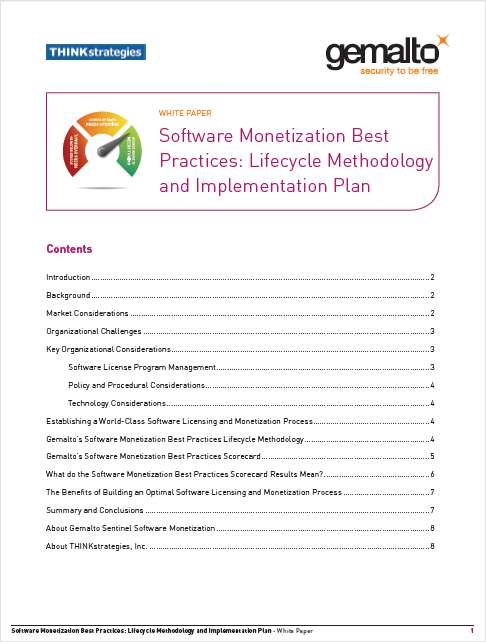Software Monetization Mistakes: Generating Revenue Without Compromising User Experience

In an increasingly competitive software market, developers and businesses are eager to find effective monetization strategies that strike a balance between generating revenue and delivering a seamless user experience. However, common mistakes in software monetization can damage a product’s reputation, alienate users, and hinder long-term growth.

Overreliance on Advertising: While advertising can be a revenue stream, excessive or intrusive ads can disrupt the user experience, decrease engagement, and drive users away. It’s essential to avoid cluttering the interface with irrelevant or disruptive ads.

Paywalls and Subscription Fatigue: Subscription models can be sustainable, but paywalls that restrict essential features or content can frustrate users. Subscription fatigue occurs when users are forced to pay for multiple services, leading to user churn. Developers should strive for transparent pricing, fair trial periods, and tiered subscription options.
Microtransactions and Hidden Costs: In-app purchases and microtransactions can provide additional revenue, but excessive or deceptive microtransactions can erode user trust. Users should always be aware of additional costs before making purchases.
Unfair or Biased Freemium Models: Freemium models offer free basic functionality with paid premium features. However, some businesses may implement unfair practices, such as intentionally limiting functionality in the free tier to push users to upgrade. Such tactics can damage the brand’s reputation and lead to negative reviews.
Compromised Security and Privacy: Users expect software to respect their privacy and data. Monetization strategies that compromise user security or privacy, such as bundling unwanted software or sharing user data, can seriously harm the user experience and lead to regulatory issues.
Neglecting User Feedback: It’s crucial for developers to listen to user feedback and address concerns regarding monetization. Ignoring user feedback can lead to negative口碑and a decline in user engagement. Regular updates, bug fixes, and responsive customer support can alleviate user frustrations and improve overall satisfaction.
By avoiding these common mistakes and adopting a user-centric approach, developers and businesses can effectively monetize their software while preserving a positive user experience. Transparency, ethical practices, and ongoing user engagement are key factors in building sustainable revenue streams that foster long-term growth.## Software Monetization Mistakes: Generating Revenue Without Compromising User Experience
Executive Summary
Monetizing software is crucial for businesses to generate revenue and sustain their operations. However, it is essential to approach monetization strategically to avoid compromising the user experience (UX) and potentially damaging the product’s reputation and user base. This article explores common software monetization mistakes and provides practical guidance on how to generate revenue while prioritizing UX.
Introduction
Software monetization involves adopting various strategies to generate revenue from a software product. It requires careful consideration of factors such as pricing strategies, subscription models, and advertising techniques. However, it is important to recognize that monetization efforts should be guided by the principle of user-centricity, ensuring that the UX remains exceptional and the value proposition is compelling.
FAQs
1. What are the key considerations for effective software monetization?
- Identifying the target audience and their willingness to pay
- Aligning monetization strategies with product value and benefits
- Continuously monitoring and evaluating user feedback
2. How can I avoid overloading users with advertisements?
- Limit the frequency and placement of ads to minimize disruption
- Offer unobtrusive ad formats that blend seamlessly with the UX
- Consider contextual targeting to display relevant ads that appeal to users
3. How do I determine the optimal pricing strategy for my software?
- Research similar products in the market and analyze their pricing
- Consider the value proposition of your software and its perceived value
- Experiment with different pricing models (e.g., subscription, freemium, pay-per-use) to find the best fit
Top 5 Software Monetization Mistakes
1. Prioritizing Monetization over UX
- Mistake: Focusing solely on revenue generation without considering the impact on user satisfaction.
- Important Points:
- User experience should be the foundation of monetization strategies.
- Intrusive ads, confusing subscription models, or excessive paywalls can damage UX.
- Regularly solicit user feedback to understand their preferences and adjust monetization accordingly.
2. Ignoring Subscription Fatigue
- Mistake: Overwhelming users with multiple subscription options or making subscriptions difficult to cancel.
- Important Points:
- Keep the subscription options simple and transparent.
- Provide clear information about subscription terms, renewal dates, and cancellation policies.
- Offer flexible subscription plans to cater to different user needs and budgets.
3. Misusing In-App Purchases
- Mistake: Overloading apps with in-app purchases that hinder progress or limit functionality.
- Important Points:
- Use in-app purchases judiciously to enhance the user experience, not hinder it.
- Disclose the cost and benefits of in-app purchases clearly.
- Avoid creating a pay-to-win or pay-to-progress environment that frustrates users.
4. Overlooking Freemium Models
- Mistake: Failing to offer a compelling free tier that entices users to upgrade.
- Important Points:
- The free tier should provide significant value and encourage users to experience the full product.
- Limit access to advanced features or content in the paid tier to create an incentive to upgrade.
- Monitor user behavior and adjust the free tier accordingly to maintain its effectiveness.
5. Ignoring Localization Factors
- Mistake: Neglecting cultural differences and localization factors when implementing monetization strategies.
- Important Points:
- Research different markets and their preferred payment methods and subscription norms.
- Translate payment interfaces, terms of service, and customer support into the local language.
- Consider offering regionally specific pricing options to cater to local purchasing power.
Conclusion
Software monetization is essential for businesses to sustain their operations, but it should be approached with a user-centric perspective. By avoiding common mistakes and prioritizing UX, businesses can generate revenue while fostering a positive and frictionless user experience. This approach leads to increased user satisfaction, retention, and ultimately, long-term profitability for the software product.
Keyword Tags
- Software Monetization
- User Experience
- Revenue Generation
- Subscription Models
- In-App Purchases

